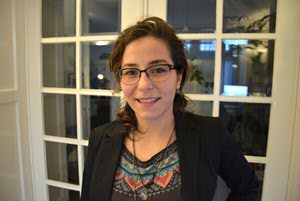In the Spotlight: "The American Kaleidoscope of the Orient"

It would be far less wicked and not quite stupid, for the Grand Turk to send two of his Slaves into Britain HOWLIZTS and W. HOWOLDOZT to command all the Britons to acknowledge themselves the slaves of the Turk, offering to secure their rights and property, and to pardon such as had borne arms against his Sublime Highness [...]
An American [pseud.], "To Howe, W. Howe," The Boston Gazette (December 30, 1776): 1.
The American Kaleidoscope of the Orient
Edward Said's hypothesis that the Orient was a European invention burgeoned a corpus of scholarship that set out to complement, complicate, and contradict Orientalism. After the terror attacks of September 11, 2001, America's interaction with the Orient came to the scholarly limelight. Recent studies explored notions of captivity, nineteenth-century imperialist projects, and U.S.-American relations with the Muslim world. In the eighteenth century, representations of the Orient were mostly imported from the Old World. These cultural articulations fed into a corpus of ideas, motifs, and traditions—a repertoire of gems and mirrors. American intellectuals and writers availed themselves of this material and created kaleidoscopic representations, for instance, to come to terms with the situation as a fledging Union.
My PhD project combines a number of studies on early American culture, European as well as Eastern literature and philosophy with research into textual mobility, American periodical and print culture to make the case that imagined Orients became an analytical tool to nuance current domestic and foreign political debates that characterized the decades of instability in the eighteenth and nineteenth centuries. There are a variety of means by which the Orient became part of early American discourse. Some product lines demonstrate ways in which, for example, American Sindbads were used for political purposes. Other primary sources deflected discussions about allegiance and loyalty to(imagined) Oriental lands (see quote above). Last but not least, a third category used forms of direct and indirect adaptation. In order to fill weekly and monthly pages, magazine editors turned to European sources for publishable material. This category includes a plethora of Oriental tales but also non-literary sources, such as Nicolas Antoine Boulanger's unsung book, Recherches sur l'origine du déspotisme oriental.
In essence, my PhD project will tease out clearly identifiable functionalities, and their respective backgrounds, or contemporary embeddings in history, philosophy, or day-to-day politics—increasingly from 1760 until the mid-nineteenth century.

| Last modified: | 08 February 2019 1.25 p.m. |
